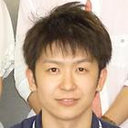Altered gene expression in an embolic stroke model after thrombolysis with tissue plasminogen activator and Stachybotrys microspora triprenyl phenol-7.
Keywords
Abstract
The present study compares gene expression and infarct area in a mouse model of embolic stroke after thrombolysis with t-PA and SMTP-7. Embolic occlusion was induced by transfer of acetic acid-induced embolus into the brain. t-PA or SMTP-7 was administered 3 h after embolization. Changes in gene expression were evaluated using microarray and RT-PCR analysis. To determine the involvement of reactive oxygen species in the response to t-PA, the free radical scavenger edaravone was infused immediately before t-PA administration. The expressions of 459 genes involved in the inflammatory response, cell-to-cell signaling, cell movement, and inflammatory disease were altered by embolic occlusion. Twenty-two of those genes were upregulated after t-PA but not SMTP-7 administration. Differences between the t-PA- and SMTP-7-treated groups in the expression of genes including the proinflammatory genes Il6, Stat3, S100a8, and Mmp9 were confirmed with RT-PCR. Edaravone ameliorated the overexpression of these genes. Our data demonstrate differences in gene expression following treatment with SMTP-7 or t-PA that likely explain the difference in therapeutic time windows of the two drugs. ROS are involved in the overexpression of proinflammatory genes. The wide therapeutic time window may be achieved through an anti-oxidative effect and inhibition of proinflammatory gene overexpression.



